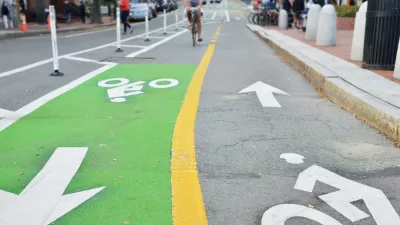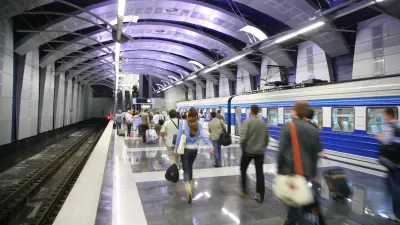The Project for Public Spaces has been sending around the e-mail circuit a mock-up of a Time magazine cover dated April 1 (no fooling) 2017, with a “Placemaking” headline acclaiming the triumph of smart growth principles. 2017? They’re being way too modest.
The Project for Public Spaces has been sending around the e-mail circuit a mock-up of a Time magazine cover dated April 1 (no fooling) 2017, with a "Placemaking" headline acclaiming the triumph of smart growth principles. 2017? They're being way too modest.

For most of the 1990s and into this century, mixed-use, pedestrian and transit friendly places were the oddity, the enclave, some place to visit. Planner-tourists went to Seaside, the Kentlands, Celebration, Mashpee Commons, Laguna West. Meanwhile some communities were steadily, without much fanfare, remaking the physical form of their place.
About six years ago, Fort Collins, Colorado, even while under constant growth pressure, started restoring the notion of authentic neighborhoods by requiring a mix of housing types in each neighborhood and specifying a proportion that had to be within three-fourths a mile from a neighborhood center or commercial district. They worked on better street connectivity.
Charlotte, North Carolina's been doing the hard work of passing ordinances to make a Centers and Corridors policy become real. People are moving to town centers to live where people never lived before, such as downtown Chattanooga. These places are not citadels of progressivism; they're not Portland, Oregon. Salt Lake City is home to a huge emerging mixed-use residential community that could be a monument to the principles of smart growth. These are places better known for conservative, limited government intervention in the marketplace. But they're also cities where public officials have figured out that building places that attract people to live and work and walk in a more vibrant urban scene pays off in building a population base that is better educated. And that brings the most coveted employers.
In the world of young fashionistas, you know something isn't hip any longer when someone shows up wearing it who shouldn't – like an aging boomer wearing a hoodie. Perhaps the same principle applies here. More likely what we have is a situation in which smart-growthers, getting older themselves, don't seem to have this figured out yet that their core argument is winning. Their conference agendas look stuck still in the drive for legitimacy, in persuading people to see the first light. We'll know for sure that new urban and smart growth and place-making are now mainstream when we see those conference agendas focused on helping communities get their plans and ordinances aligned with the new market.

Maui's Vacation Rental Debate Turns Ugly
Verbal attacks, misinformation campaigns and fistfights plague a high-stakes debate to convert thousands of vacation rentals into long-term housing.

Planetizen Federal Action Tracker
A weekly monitor of how Trump’s orders and actions are impacting planners and planning in America.

San Francisco Suspends Traffic Calming Amidst Record Deaths
Citing “a challenging fiscal landscape,” the city will cease the program on the heels of 42 traffic deaths, including 24 pedestrians.

Defunct Pittsburgh Power Plant to Become Residential Tower
A decommissioned steam heat plant will be redeveloped into almost 100 affordable housing units.

Trump Prompts Restructuring of Transportation Research Board in “Unprecedented Overreach”
The TRB has eliminated more than half of its committees including those focused on climate, equity, and cities.

Amtrak Rolls Out New Orleans to Alabama “Mardi Gras” Train
The new service will operate morning and evening departures between Mobile and New Orleans.
Urban Design for Planners 1: Software Tools
This six-course series explores essential urban design concepts using open source software and equips planners with the tools they need to participate fully in the urban design process.
Planning for Universal Design
Learn the tools for implementing Universal Design in planning regulations.
Heyer Gruel & Associates PA
JM Goldson LLC
Custer County Colorado
City of Camden Redevelopment Agency
City of Astoria
Transportation Research & Education Center (TREC) at Portland State University
Jefferson Parish Government
Camden Redevelopment Agency
City of Claremont





























